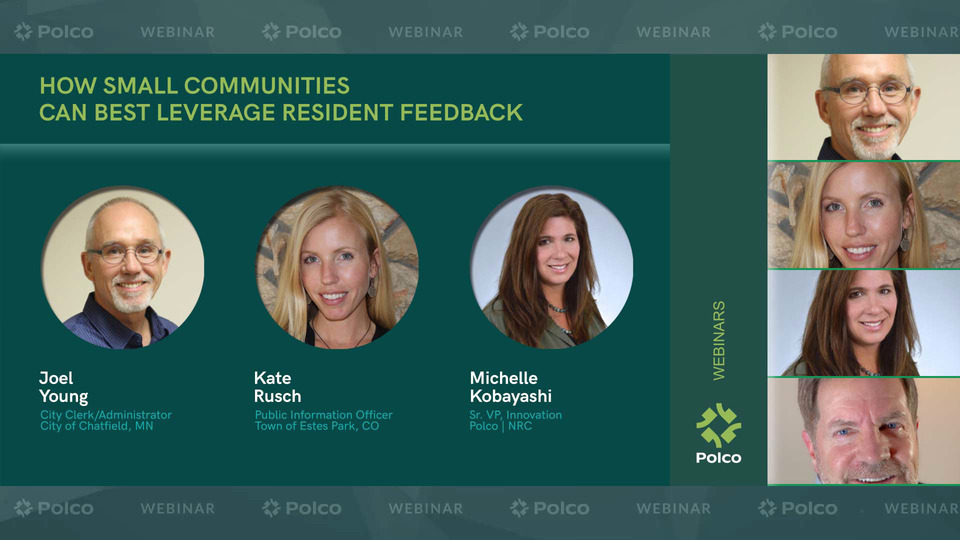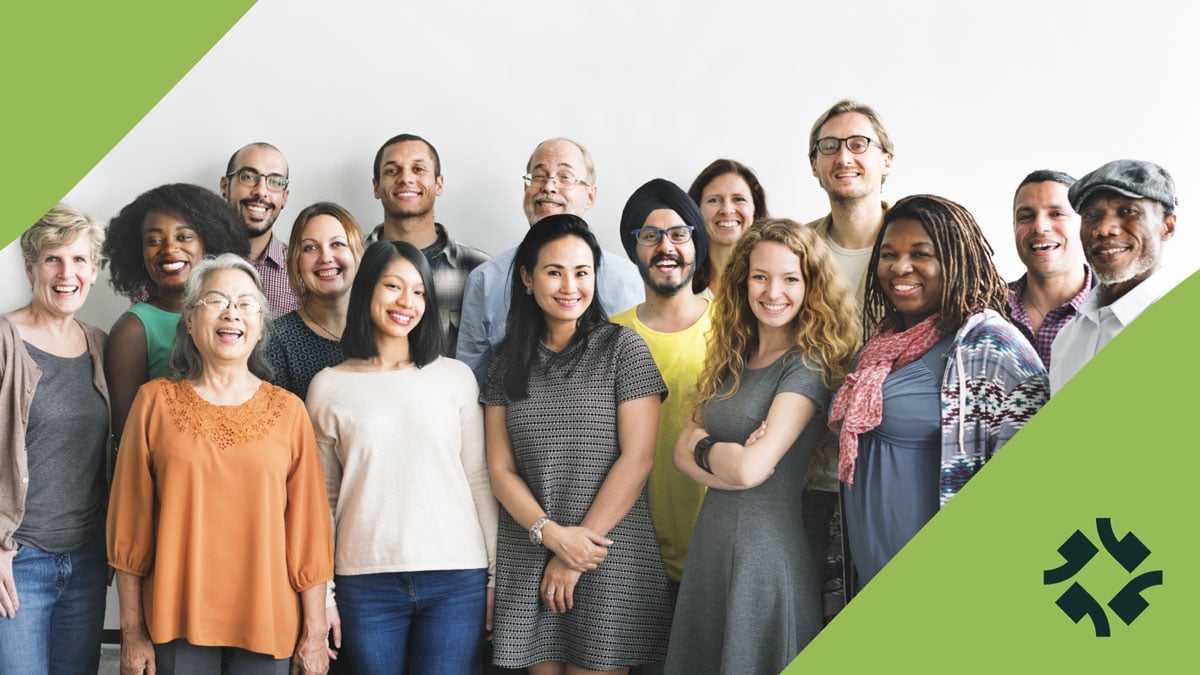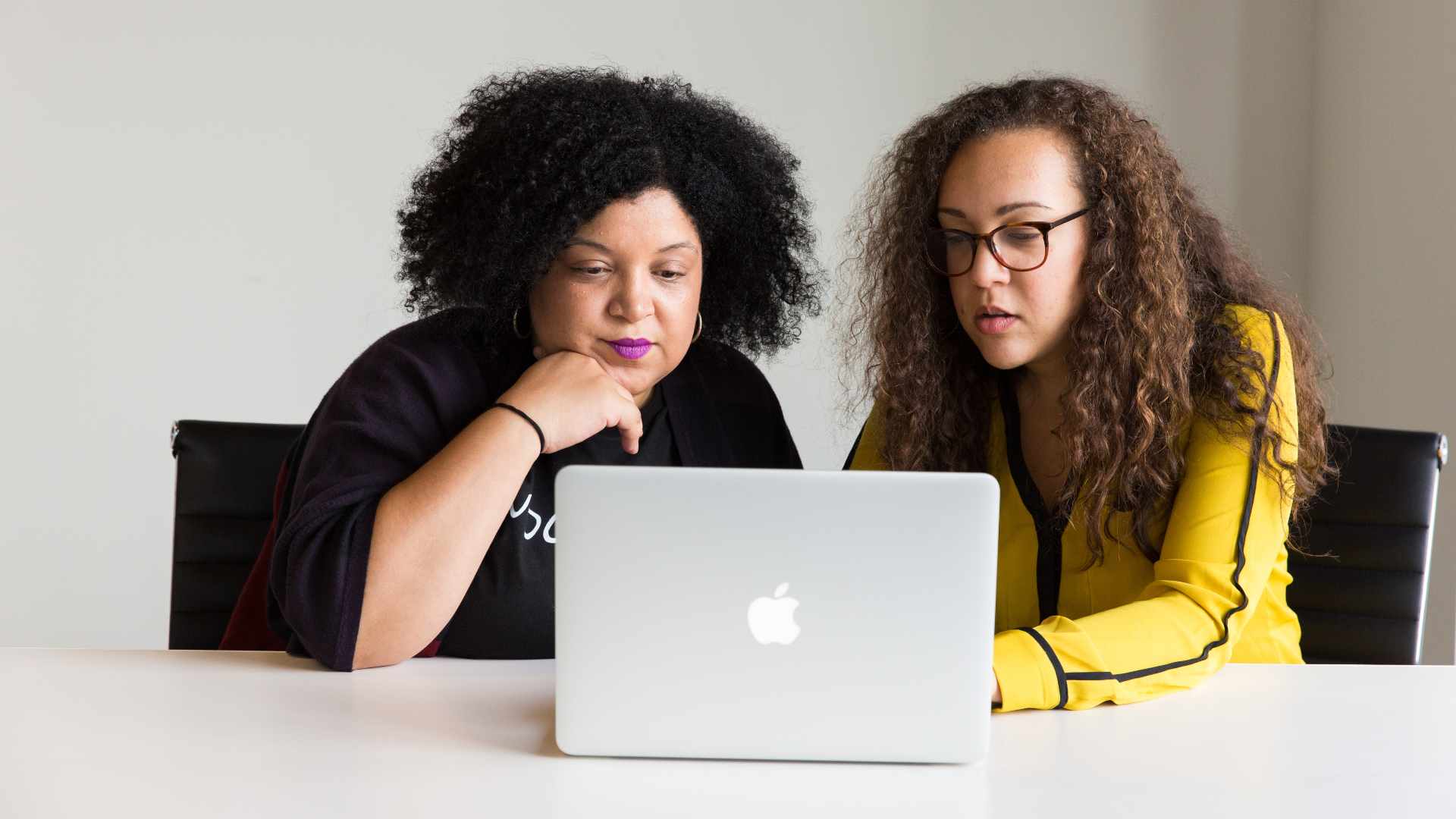How Small Communities Can Best Leverage Resident Feedback
By Polco on March 3, 2022

Small cities, towns, and villages must meet high demands, often with limited resources. As we’ve seen throughout the pandemic, leaders must identify gaps and strengths in community livability in order to allocate resources to critical focus areas. The good news is resident surveys can be a game-changer for strategic planning and budgeting even in very small communities.
Learn how and why small community leaders engage intentionally through resident surveys. Kate Rusch, Public Information Officer for Estes Park, Colorado, and Joel Young, City Clerk/Administrator for Chatfield, Minnesota, share tips and stories about their communities’ engagement journeys.
We also hear from Matt Fulton and Michelle Kobayashi of Polco. They discuss the strengths and struggles of small communities and ways these jurisdictions can bridge the gaps.

Why Engagement?
Sometimes when communities are small, feedback can feel organic because everyone knows everyone. But even close-knit communities need an intentional engagement plan.
“Our communities are more dynamic and in flux than what meets the eye. We need to be really intentional and deliberate in getting resident guidance and telling them what we are thinking and trying to do,” said Young.
One way of being intentional is to adapt to people’s preferences. People like to engage differently after the pandemic.
“People are less interested in the traditional ways of providing input, such as open houses, workshops, and board meetings. But they are happy to do things that are a little less time and can be on their own schedule, such as surveys and other online opportunities,” said Rusch.
Why The National Community Survey (The NCS)? Estes Park’s Journey
The National Community Survey (The NCS) is another way both communities gather strategic resident feedback. The NCS is a scientific benchmarking survey that provides a comprehensive and accurate picture of livability and resident perspectives about local government services.
Estes Park, Colorado has conducted The NCS five times since 2011.
“The NCS is our best source of data from the community. One of the primary reasons we chose it was we can benchmark with so many other communities across the nation. Being able to look at how other communities rate services is really helpful to us so then we can identify where we have a need,” said Rusch.
In Estes Park, the NCS data strongly informs the Strategic Plan. In fact, one of the plan’s objectives is to make sure the Town uses the survey data. Every summer when Town staff meet with the Board to talk about strategic goals, staff bring NCS data with them to help inform the goals.
Estes Park also uses The NCS for prioritization.
“A lot of communities, especially small ones, have ever growing demands and never growing staff. At least it feels that way. It’s hard to prioritize. The data helps us to evaluate those things and set priorities and make sure we use our limited resources to get to where we need to go the most,” said Rusch.
Estes Park is no stranger to natural disasters, fires, and floods–which can affect revenue sources significantly One of the custom questions on The NCS is about the most and least important services to spend money on. Fortunately, Estes Park has not yet had to cut critical services, but Rusch says she’s grateful to have that data in case she has to use it.
Estes Park watches trends on the NCS overtime to gauge the effectiveness of their interventions and to evaluate where they need to put more work in.
For example, Estes Park used to get poor ratings on economic development and recreation centers. So they worked with partners to develop an Economic Development Corporation and to establish the community’s first recreation center.
“We were so excited we improved a lot in those areas on The NCS. It’s really rewarding to see trends go up over time,” said Rusch.
Why The National Community Survey (The NCS)? Chatfield’s Journey
While Estes Park has been doing The NCS for more than a decade, Chatfield recently decided to conduct their first NCS.
It has taken a long time for Chatfield– a community of 3000–to get to this point.
One step that paved the way started a bit more than a decade ago when Chatfield leaders started using a transparency tool. Residents greatly appreciated the tool despite the cost.
“It cost money and was a risk but was pretty successful. It set us up to do more. Our City Council has been supportive in stepping out and doing things that might not be the normal thing for a small community in southeast Minnesota,” said Young.
While the transparency tool paved the way for other innovations, it was still a big commitment for Chatfield’s leaders to decide to go with The NCS.
“We asked ourselves, do we have the courage to step forward and see how we’re doing? And then do we have the courage to take on this information and pique the interest of the community to do something different than we’ve done in the past?” said Young.
Since this is the first time Chatfield is conducting The NCS, leaders are focused on gathering baseline information and learning what they can. The first survey reaffirmed that residents are, in general, happy with the local government. Results showed that residents are interested in maintaining the historic downtown and investing in parks. Now the City plans to send out short surveys and polls through Polco to dive into specific feedback about the issues that came up in the survey.
Community Engagement Advice
Both local government leaders have advice for others about community engagement.
First, they urged communities to use their data. “Don’t just do the survey and set it on a shelf. Remind the community that they responded to the survey. Explain to them why and how it’s driving your decisions. Cite survey data when talking to local media or putting out news releases,” said Rusch.
Next, they urge leaders to dive deeper into data after their NCS is over. After hearing initial resident feedback via The NCS, Chatfield is planning to use short polls to gather more information about parks and the City’s historic downtown. Estes Park leaders noticed that different demographics responded differently to The NCS questions. As a result, they are partnering with community organizations to do a separate survey related to diversity, equity, and inclusion.
Last, Rusch and Young encourage local governments to be consistent.
“Don’t just do a survey once and expect that’s all you need to do. Look at how you are doing over the years. We use trends to help with our own internal measurements of how we are doing,” said Rusch.
For both Rusch and Young, community engagement is central to the work they do as local government leaders.
“Input to our local government is what makes us tick,” said Rusch.
“Reaching out to residents is critical in building the relationships we need to be successful,” said Young.
Related Articles
- How Building a New Community Center Increased Resident Satisfaction in Estes Park
- Online Engagement Helps Local Governments to Connect with Residents Throughout Policy Cycle
- How Decatur Empowers Residents To Be Leaders in Shaping Their Community
Popular posts
Sign-up for Updates
You May Also Like
These Related Stories

Today's Top Ten Community Needs According to US Residents

Small Cities Can Use Grant Funds to Purchase Polco for Data Collection

